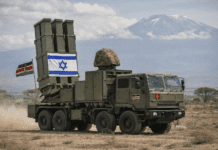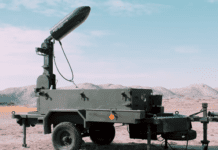This post is also available in:
 עברית (Hebrew)
עברית (Hebrew)
Drone detection in urban environments in order to minimize risks is a new challenge. Airspace security and defense starts with situational awareness. A new radio frequency sensor expanded capabilities and increased detection range, providing early warning, detection, and classification of drones.
Incorporating an advanced design for urban environments, with a detection range of up to 5 km, the Dedrone RF-160 offers reliable, actionable analytics of drone activity for organizations to build a threat profile, understand their risk, and begin building resilience in their airspace security program.
It is an upgraded version of the company’s the RF-100, and includes new and advanced features such as increased detection range, integrated LTE, etc.
According to suas.com, the system requires simple installation and fast startup thanks to integrated LTE. Only needing power supply and a pole, it automatically connects to the Dedrone Cloud via LTE and immediately starts to detect drones. An on-premise server is not required. Users can assess their drone risk quickly and use these insights to act upon drone threats.
A single RF-160 has an average detection range of 1.6 km, and under ideal conditions, up to 5 km for certain drones. This range extends when one or more RF-160s are working together, and even more information on drone activity can be generated when layering with other detection technologies, including the RF-300, radar, and PTZ-cameras.
The technology incorporates an advanced design for urban environments: Urban areas have more radio frequency activity from radio communication, televisions, cell phones, GPS, and other technologies. The RF-160 meets the needs of organizations in such environments with a higher potential of RF interference.

























